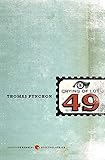Writing professors love to talk about craft. Carpentry and agrarian metaphors abound. Writing is difficult manual labor; pens and pencils are “tools.” Stories, poems, and essays are perfected in workshops. Yet the moment the conversation turns to audience, the blue-collar references recede. It is considered impractical, perhaps taboo, to speak about outside audience with undergraduates because that means talking about publication.
I teach an introductory creative writing course at the College of New Jersey. It is a required fiction and poetry course for future minors. My students are smart and open-minded. We read John Cheever and Aimee Nezhukumatathil and George Saunders and Don DeLillo and Vievee Francis and Traci Brimhall. One staple of my classroom is nearly constant consideration of readers outside of the university. If a student asks me how she can make a living as a writer, I am going to give her an honest answer. A student who is driven to write and share her voice with the world needs to hustle. She needs to be shrewd. She needs to write for readers.
If I am going to talk about craft — if I am going to use blue-collar metaphors and references — I am going to remember what my father said about his craft work as a carpenter: do the job right. Make the customer happy. Take pride in your creations. To achieve that end, I talk to my students about publishing. Most are curious about publication; some are even anxious. It is part of my job, I think, to introduce them to the reality of their audience outside of the classroom. Let us be honest with ourselves: the classroom is not the world. The fact that it goes without saying means it is often unsaid. We train writers to write for their peers. As professors, we often train writers to write for us.
 A talented student who is insensitive to audience might thrive in a university through sheer force of skill, but such gifts are worthless to the outside world. I am saying this as someone who loves experimentation and innovation, and who rewards my students for risks of language, structure, and thought. Yet I want those same students to be practical and smart about publication. Even a trickster like Thomas Pynchon could pivot between The Crying of Lot 49 and the reserved “Is It OK to Be a Luddite?”. Audience defines our words. Even better than the vague concept of audience, readers — living, breathing readers who are imperfect and stubborn and yet often rewarding with their time and attention, and hopefully, their monetary support — are the lifeblood of writing.
A talented student who is insensitive to audience might thrive in a university through sheer force of skill, but such gifts are worthless to the outside world. I am saying this as someone who loves experimentation and innovation, and who rewards my students for risks of language, structure, and thought. Yet I want those same students to be practical and smart about publication. Even a trickster like Thomas Pynchon could pivot between The Crying of Lot 49 and the reserved “Is It OK to Be a Luddite?”. Audience defines our words. Even better than the vague concept of audience, readers — living, breathing readers who are imperfect and stubborn and yet often rewarding with their time and attention, and hopefully, their monetary support — are the lifeblood of writing.
Professors know the importance of readers. I spoke with Tony Ardizzone, who teaches undergraduates at Indiana University, and Brian Oliu, who teaches at the University of Alabama. Both agreed: “I don’t think undergraduates at the 200 or 300-level consciously consider an audience for their stories beyond the other students in their workshop,” says Ardizzone. None of us blame the students, of course. A workshop audience is temporary and elastic; when you gift a draft to a group, they return the work to you. Not so with publication. Oliu asks his students to think about what parts of their stories an audience must comprehend as the writers originally intended, and what can be subjective. Oliu wants his students to consider if “are they comfortable with, as Maxine Kumin puts it, ‘releasing their work into the world and letting the ages do what it will.'”
How might we accomplish this for our students? Jay Varner, who teaches introductory and advanced creative non-fiction at James Madison University, thinks talking about context is essential. He urges his students “to assume that they’re writing for a reader off-campus.” At New Mexico Highlands University, Tyler Mills reminds her poetry students that they “can’t follow your poem to the café in Seattle on a Saturday afternoon where someone opens up to page fifteen of the literary journal on the table, sees your poem, and wonders why the ‘you’ might mean three different people in ambiguous ways.” She tells her students that poems “need to stand up to the world and speak past the workshop’s idiosyncrasies, its ‘reliability’ to the small group.”
Like Mills, I see worth in the college writing workshop, however imperfect its methods. Those who hate workshops likely do so because they have inaccurate perceptions and expectations of its success. I see the college creative workshop as one very particular audience; a literary experiment of sorts. The ability to “game” the workshop — to write what your peers want to hear — is not an entirely disingenuous act. If one can master writing to this group and is aware of what one is doing, than one can extend that skill toward the more nebulous audience of the outside world. When we look at a writer’s trajectory across an entire career, we see curves and sometimes contradictions. Authentic voices often evolve.
The need to evolve and shift one’s voice toward particular audiences is no more essential than for nonfiction writers. Alissa Wilkinson, a film critic for Rolling Stone and Christianity Today, teaches her students at the King’s College in New York City that they are not to “pander to their readers by telling them what they want to hear; rather, it’s trying to understand the questions, experiences, and prejudices their reader likely brings to the table, and thinking about how to make their argument to that reader and address their concerns without alienating or patronizing them.” Such an approach “requires deep empathy and hospitality.”
The importance of empathy was echoed by Amanda Goldblatt, who tells her fiction students at Northeastern Illinois University to think of writing “as a form of communication or communion.” I like the duality of those ideas, and think one can be high-minded about writing and still want students to reach readers and get paid for their creations. Goldblatt returned to teaching students the importance of “engagement” with audience: “If the reader, primarily, can’t understand, and secondarily (but perhaps more importantly), isn’t encouraged into a significant and new experience, then a story won’t work, won’t stick.”
Goldblatt knows that undergraduates grow simultaneously as readers and writers. She asks what draws them to the books they love, and they invariably use the word “flow,” as in how “you can read without stopping or stumbling, but also, when writing flows, it’s because one moment dissolves into the next, or the story is so engaging that they lose time, or feel something intensely while reading.”
To be certain, there is no one solution to this problem that covers all genres. Many successful poems and stories require ambiguity and confusion, or as Goldblatt describes it, “disorientation.” She explains that students must learn “to be not only prepared for the reader’s disorientation but willing to use it to meaningful effect.” The professors I spoke with might not use my particular approach toward audience. But we do share a feeling of responsibility for informing our students about the literary world beyond our walls. Readers must not be some abstract concept in a linguistic experiment. They are the people who click on essays, buy books, share collections, and who wander into bookstores. Readers help writers get paid. Readers are essential. Let’s teach students how to write for them.
Image Credit: Pixabay/Pexels.









